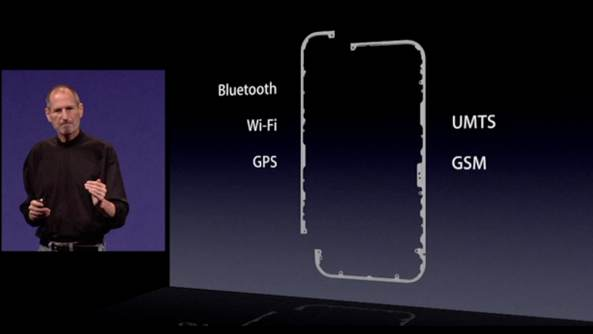Antennagate Settlement: Apple Addresses iPhone 4 Issues

The Antennagate settlement marks a noteworthy chapter in Apple’s ongoing narrative, particularly surrounding the iPhone 4 problems that ignited much controversy. Launched in 2010, the iPhone 4 experienced significant backlash due to design flaws that led to unexpected call drops, particularly when held in a certain manner. Apple’s resolution in March 2012 offered a trivial payout of $15 to customers affected by this issue, highlighting the tensions between innovative design and functional reliability. This situation not only resulted in a high-profile class action lawsuit but also ushered in discussions about the Apple controversy surrounding the company’s design-first philosophy. As the dust settled, the Antennagate history serves as a cautionary tale about the ramifications of prioritizing aesthetics over practicality in technology.
When discussing the infamous antenna issues of Apple’s flagship device, many people recall the uproar over the so-called “Antennagate” scandal. This episode involved significant complaints regarding the iPhone 4’s connectivity problems, primarily linked to its sleek yet problematic design. Users experienced unexpected call drops, particularly due to the device’s placement of its antenna, raising alarm bells around Apple’s engineering choices. The ensuing attention not only brought to light the Apple class action lawsuit but also reflected broader concerns about device reliability in the tech market. Ultimately, the fallout from this incident encapsulated how crucial user experience is, even amid the frenzy surrounding innovative smartphone designs.
Understanding the Antennagate Settlement
In March 2012, Apple announced a settlement concerning the infamous Antennagate controversy, offering affected iPhone 4 owners a $15 payout. This decision came at the tail end of a tumultuous time when users reported issues with call drops, primarily influenced by how the device’s antenna was engineered. The settlement was particularly significant as it came after a lawsuit that accused Apple of misleading consumers about the iPhone 4’s design flaws, resulting in a comprehensive response to a class action lawsuit which aimed to compensate those who felt wronged.
Despite the $15 payout seeming modest, it was a gesture acknowledging the grievances of many iPhone users who experienced significant annoyance from the defects. The Antennagate settlement underscored Apple’s commitment to addressing consumer concerns, albeit not in the most conventional sense. This payment was indicative of a larger effort by Apple to quell the backlash and restore confidence amongst its user base, while also setting a precedent for how tech companies might handle similar controversies in the future.
Frequently Asked Questions
What was the Antennagate settlement related to the iPhone 4 problems?
The Antennagate settlement involved Apple offering affected iPhone 4 owners a payout of $15 to those who experienced call drops due to the phone’s unique design flaws. This settlement was part of Apple’s resolution to the controversy over the iPhone 4’s antenna issues.
How did the Antennagate controversy impact Apple?
The Antennagate controversy highlighted design flaws in iPhone 4, drawing attention to Apple’s design-first philosophy. Although it didn’t lead to mass returns, it became a significant moment in Apple’s history, marking a clash between aesthetic design and product functionality.
What was the Antennagate history and consumer response?
The Antennagate history began with reports of the iPhone 4 dropping calls when held in a particular manner, leading to public outcry and a class action lawsuit against Apple. Apple’s response included a press conference to address these concerns, which contributed to the settlement.
What claims were made in the Apple class action lawsuit regarding Antennagate?
In the Apple class action lawsuit over Antennagate, plaintiffs claimed that the iPhone 4’s design flaws led to call drops and poor reception, ultimately seeking compensation for affected customers whose complaints were not adequately addressed by Apple.
What role did media play in the Antennagate controversy?
The media played a crucial role in amplifying the Antennagate controversy, particularly when Consumer Reports refused to recommend the iPhone 4 due to its antenna problems. This heightened scrutiny forced Apple to take immediate action to manage public perceptions.
| Date | Event | Key Details | Impact |
|---|---|---|---|
| March 29, 2012 | Antennagate Settlement | Apple offered $15 payouts to iPhone 4 users affected by call drop issues. | Settled a significant controversy related to product design and user experience. |
| Consumer Reports Reaction | Consumer Reports could not recommend the iPhone 4 due to the antenna issue. | Increased media scrutiny and customer dissatisfaction. | |
| Design Controversy | Apple’s design choices prioritized aesthetics over functionality, impacting signal reception. | Raised questions about Apple’s design philosophy and practical product performance. |
Summary
The Antennagate settlement marked a pivotal moment in Apple’s history, resolving the controversy surrounding the iPhone 4’s faulty antenna that resulted in dropped calls. While the $15 settlement may seem minimal compared to the trouble experienced by users, it reflects Apple’s acknowledgement of design flaws and their commitment to customer satisfaction. The event provided critical lessons about balancing innovative design with functionality, a topic that continues to resonate within the tech community today.
You may also like

iOS App Store Success: A Milestone in Digital Distribution


First Email from Space: The Macintosh Portable’s Legacy
Archives
Calendar
| M | T | W | T | F | S | S |
|---|---|---|---|---|---|---|
| 1 | 2 | 3 | 4 | 5 | ||
| 6 | 7 | 8 | 9 | 10 | 11 | 12 |
| 13 | 14 | 15 | 16 | 17 | 18 | 19 |
| 20 | 21 | 22 | 23 | 24 | 25 | 26 |
| 27 | 28 | 29 | 30 | 31 | ||